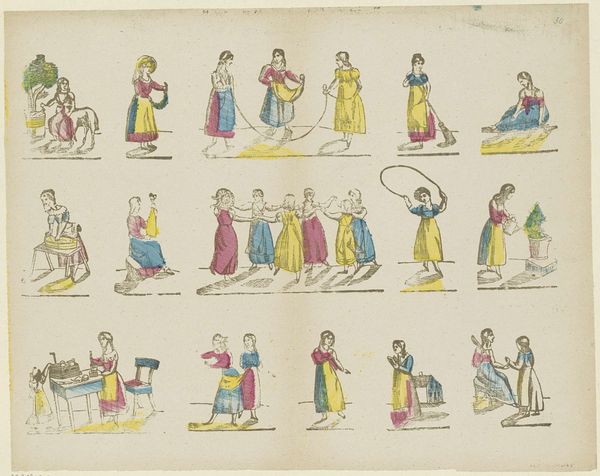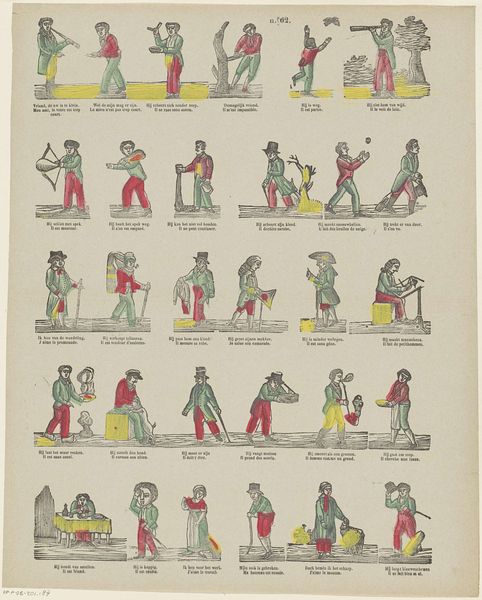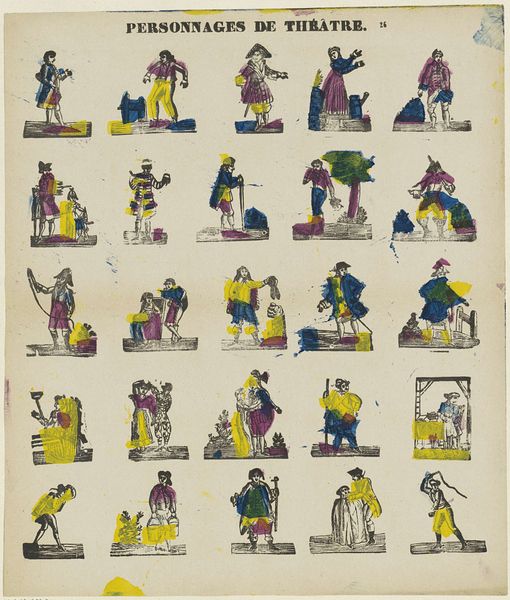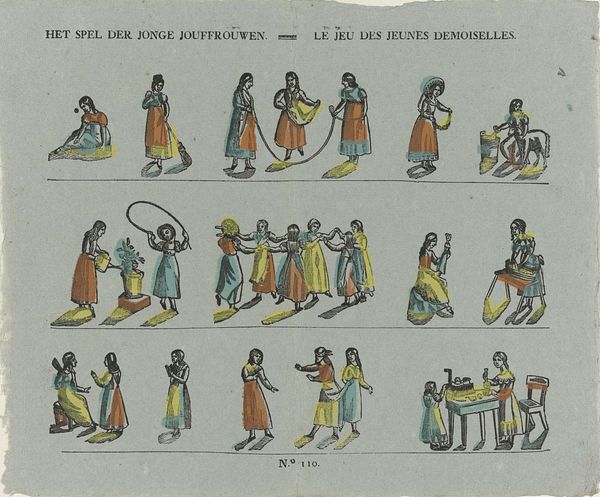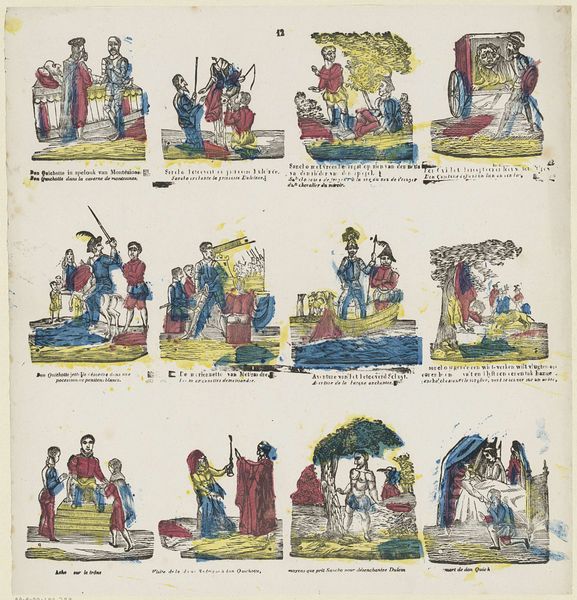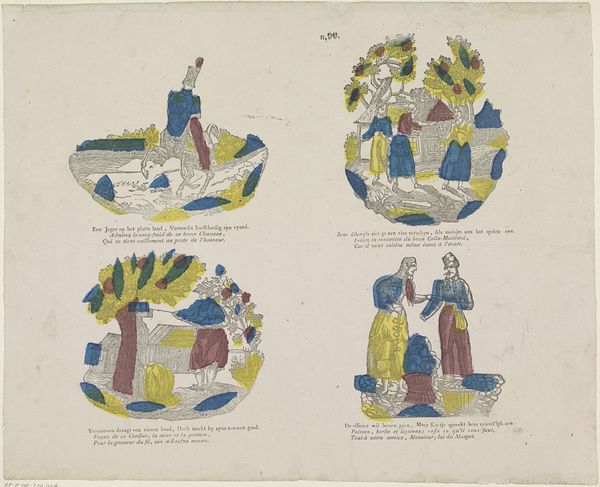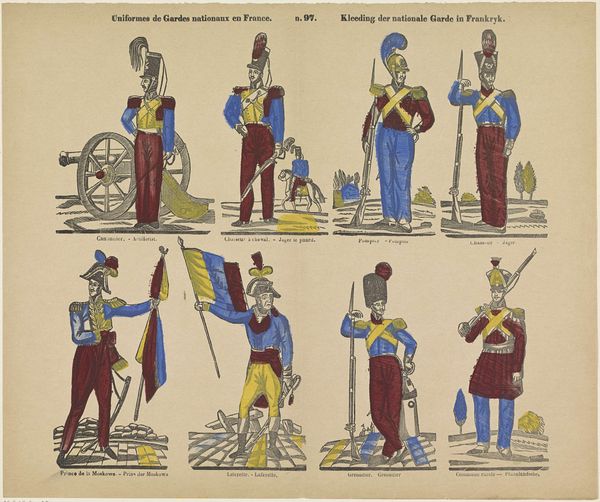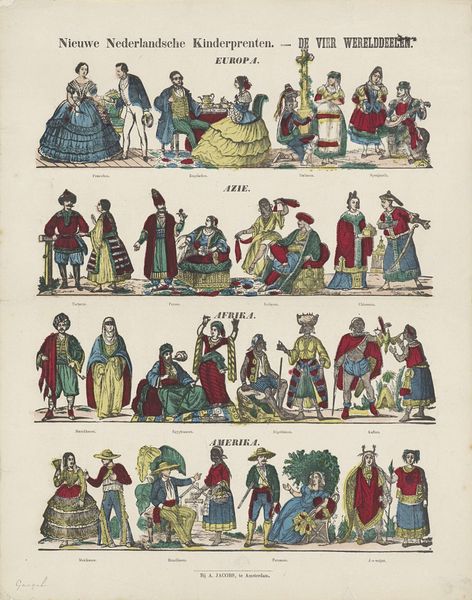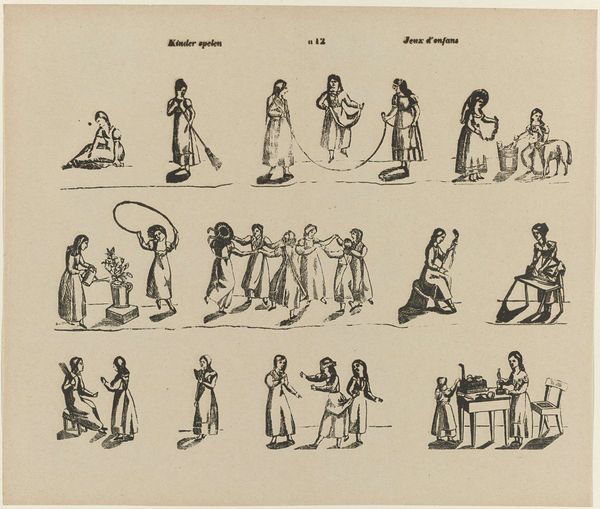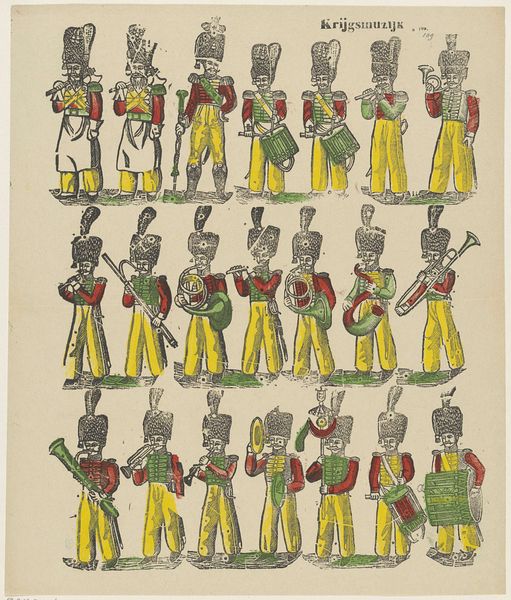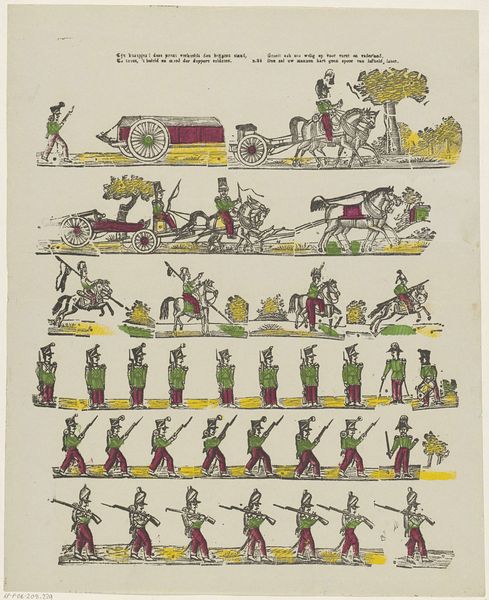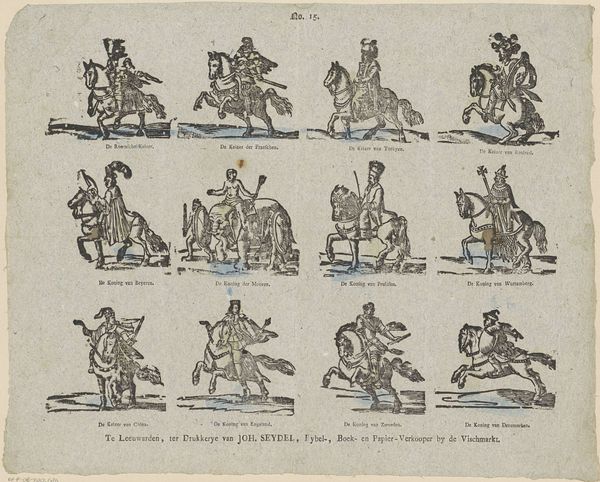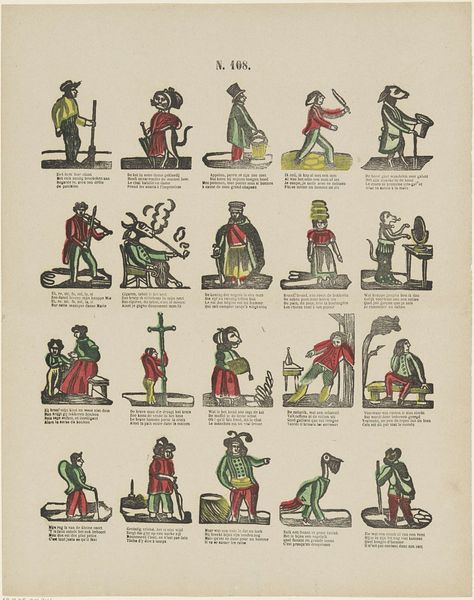
#
comic strip sketch
#
imaginative character sketch
#
quirky sketch
#
personal sketchbook
#
sketchwork
#
sketchbook drawing
#
character design for animation
#
storyboard and sketchbook work
#
fashion sketch
#
sketchbook art
Dimensions: height 320 mm, width 397 mm
Copyright: Rijks Museum: Open Domain
Editor: Here we have "Kinder spelen / Jeux d'enfans," a sketch presumed to be from between 1833 and 1900, by Glenisson & Zonen. I am really drawn to its quaint aesthetic; there is a charm to how flatly the forms are rendered and also how simply each activity is described. What's your initial impression of this work? Curator: Immediately, I am struck by the work's rigorous organization. The composition relies on a grid, methodically arranging each vignette. Observe how each figure interacts with the carefully defined negative space around them. How does that structured arrangement affect your reading? Editor: It definitely gives it a very formal and almost diagrammatic feeling, like a study of forms rather than a lively depiction. Curator: Precisely! The artist prioritizes clarity of form and line. Note the economy of color; the limited palette directs our attention to the relationships between shapes. Does the repetition of those colors create any sort of relationship or emphasis within the artwork itself? Editor: I think the recurring pops of the saturated green and purple-ish hue bring a cohesive visual rhythm; that choice gives the whole image a sense of unified structure despite the diverse scenarios being represented. Curator: And that visual rhythm enhances the sequential reading of the poses, allowing us to dissect how each distinct movement builds upon the prior activity. It shows an inherent formal concern for pictorial balance above naturalistic representation. What conclusions might you draw? Editor: So even with these intimate scenes of what is ostensibly quotidian life, this art isn't primarily a snapshot of 19th-century games; rather it’s almost like the games become secondary to studying the underlying forms, lines, and rhythms! I appreciate learning to notice that.
Comments
No comments
Be the first to comment and join the conversation on the ultimate creative platform.
